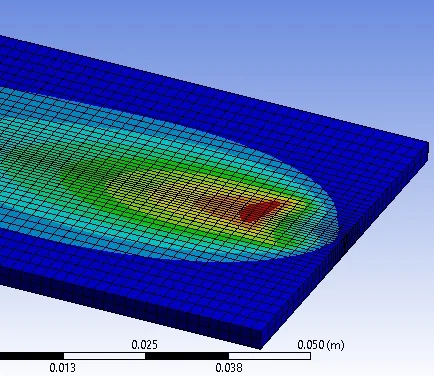
Welding, as a fundamental process in manufacturing and fabrication, continually evolves to meet the demands of modern engineering. Among the myriad welding techniques, friction stir welding (FSW) stands out as a cutting-edge method that holds great promise for creating high-strength joints between workpieces. FSW distinguishes itself by employing a non-consumable rotating tool that traverses along the joint of rigidly fixed workpieces, making it particularly suitable for materials like aluminum.
In the realm of FSW, this study focuses on workpieces made of aluminum measuring 63.5 x 76.2 mm with a thickness of 1.8 mm. The welding process involves the use of a rotating tool, where the spindle speed ranges from 800 rpm to 1000 rpm, and the tool feed rate spans from 8 cm/min. to 12 cm/min. This innovative approach to welding demonstrates the versatility and adaptability of FSW in joining materials with precision.
The primary objective of this work is to scrutinize the performance of Friction Stir Welding under the influence of dynamic loads. Employing advanced software tools such as AutoCAD, ANSYS 2020 R1, and MINITAB 19, the study integrates finite element analysis and regression analysis to gain comprehensive insights into the welding process. By leveraging the results obtained from ANSYS, MINITAB is used to generate a regression model that aids in forecasting the performance of the FSW under varying conditions.
The study acknowledges the challenges posed by the time-consuming nature of simulating the complete FSW process for everyday engineering tasks. Consequently, a pragmatic approach is adopted, focusing on simplified models that successfully predict key parameters. Total Deformation, Equivalent Stress, Equivalent Elastic Strain, Strain Energy, Kinetic Energy, Total Velocity, Total Pressure, Counter Flux, and Temperature are among the critical factors explored through these models.
As we delve into the subsequent sections, the intricacies of the FSW process and the collaborative use of AutoCAD, ANSYS, and MINITAB will be elucidated. This multidimensional analysis not only enhances our understanding of FSW but also provides practical insights for engineers seeking to optimize welding processes in real-world applications.



